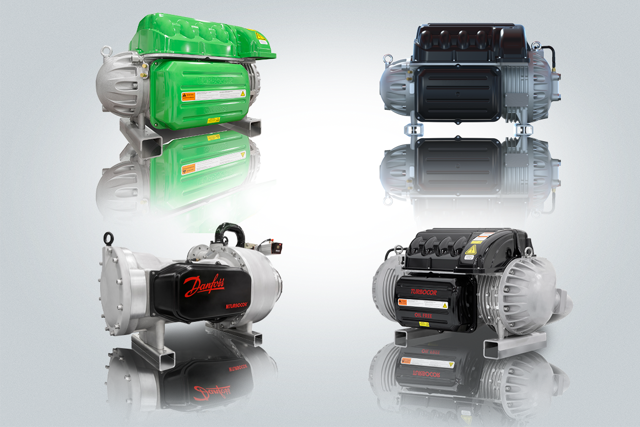The Danfoss Turbocor® TG310 compressor is the first 60-90TR compressor introduced with R1234ze refrigerant, a refrigerant with an extremely low global warming potential. Its cooling capacity is equivalent to that of the TT300 compressor which uses R134a as refrigerant.
The direct global warming potential of R1234ze is almost three orders of magnitude smaller than that of R134a (6 versus 1300). The direct global warming effect which is caused by refrigerant loss as a result of handling and system leaks is only part of the story.
There is also an indirect global warming effect of refrigerants coming from the system efficiency. Less efficient compressors need more electricity causing more global warming that way. Overall system efficiency result from cycle and compressor efficiencies. The thermodynamic cycle efficiencies of R134a and R1234ze are identical according to the NIST Refprop program. However, tests at the Danfoss Turbocor® development laboratories showed that R1234ze has roughly a 4% higher compressor efficiency than R134a. The two reasons for this higher compressor efficiency are:
1. The lower sonic velocity of R1234ze compared to R134a, the compressor will run slower to reach the same lift in saturation temperature from evaporator to condenser as R134a. Slower compressor speed results in lower gas velocities reducing the frictional flow losses.
2. The larger aero passages required with R1234ze and its lower density further reduce the frictional lossed. The TG310 compressor uses indeed larger aero components than equivalent TT300 operating with R134a for the same capacity.
The classification of R1234ze as an A2L fluid (slightly flammable) However, R1234ze is less flammable than other A2L fluids such as HFC32.


